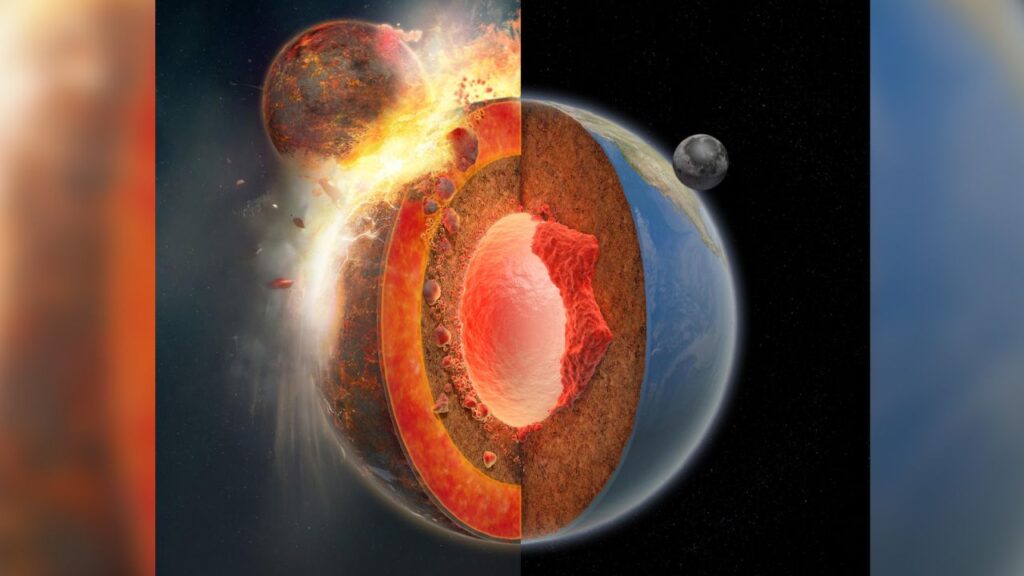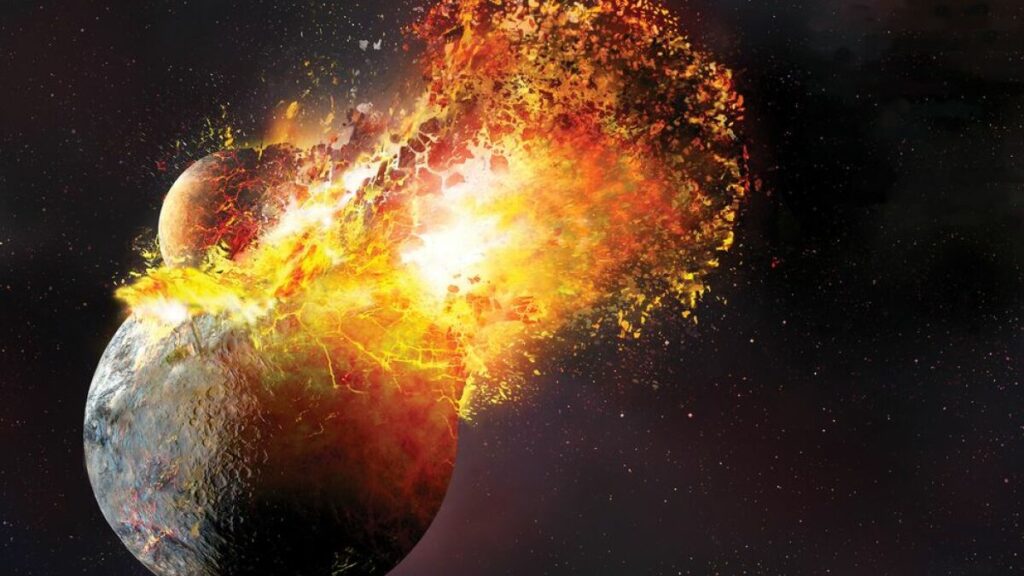Where did the Moon come from? In general, moons of most planets are formed when nearby debris and matter coagulate into solid forms. For planets of enormous mass, these forms are pulled into orbit. However, for the Earth’s moon, scientists have a different theory. They believe that a protoplanet, a body of matter which has the potential to become a full planet, crashed into Earth and the debris from that collision is what formed the Moon. This theory is called the giant impact hypothesis, and researchers believe they have found geological evidence that this scenario is correct through evidence from the supposed protoplanet Theia. A main reason this had remained as just a hypothesis was due to the fact that no remains of Theia had ever been found in the solar system.
However, some geophysicists believe this evidence can be gathered on Earth itself. Dr. Qian Yuan, a postdoctoral fellow at the California Institute of Technology, believes that significant remains of Theia are lying deep within the Earth. Yuan’s theory has to do with LLVPs, or large low velocity provinces. These are areas near the Earth’s mantle which are unique in that their geological composition is different from the nearby mantle’s––specifically, their iron content is much higher. There are two LLVPs present currently––one is under Africa and one is under the Pacific. It is Yuan’s idea that these LLVPs are whole fragments of Theia which were enveloped into the Earth after their collision.

“The moon appears to have materials within it representative of both the pre-impact Earth and Theia, but it was thought that any remnants of Theia in the Earth would have been ‘erased’ and homogenized by billions of years of dynamics (e.g., mantle convection) within the Earth… This is the first study to make the case that distinct ‘pieces’ of Theia still reside within the Earth, at its core-mantle boundary.”
Dr. Steven Desch, a professor at Arizona State University

Yuan’s team collaborated with other researchers from Arizona State, Caltech, the Shanghai Astronomical Observatory and NASA’s Ames Research Center to identify what a potential chemical makeup of Theia would look like. After comparing it to the composition of the LLVPs, their similarity prompted him to conclude that the LLVPs and the Moon could likely have had the same origin.
This is a compelling new idea about how the Moon came to be, and Yuan invites other researchers to build off of his foundation and reach for more conclusions. The study’s coauthor Hongping Deng stated “Imagine that if we managed to recover some Theia signals from the deepest mantle, we could better understand the architecture and composition of the infant solar system without turning to present-day meteorites with messed-up signals.”

